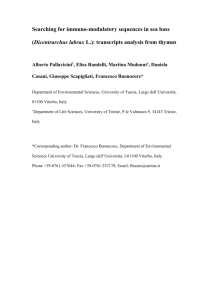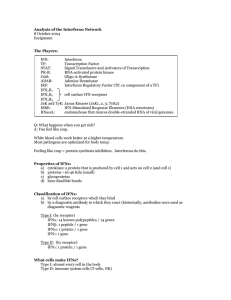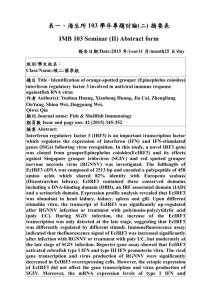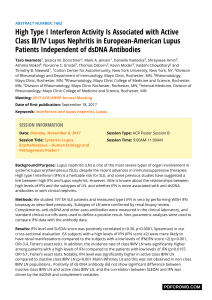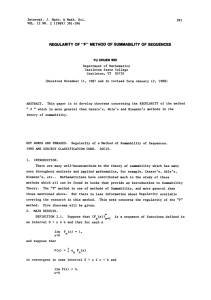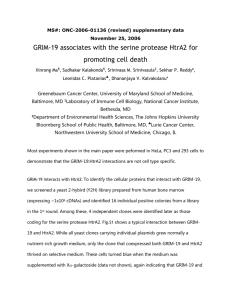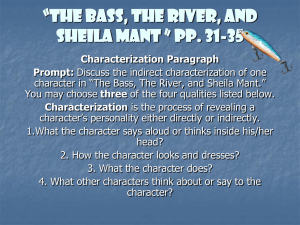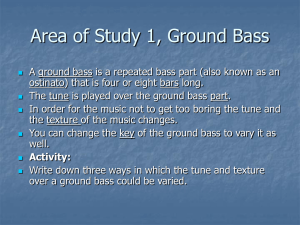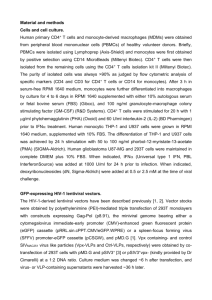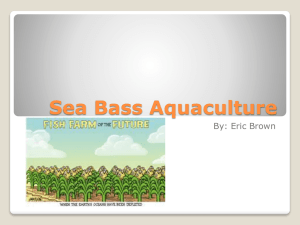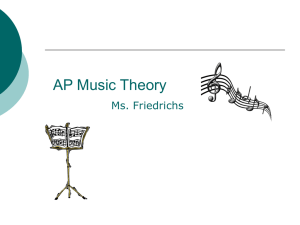Molecular characterisation and structural analysis
advertisement
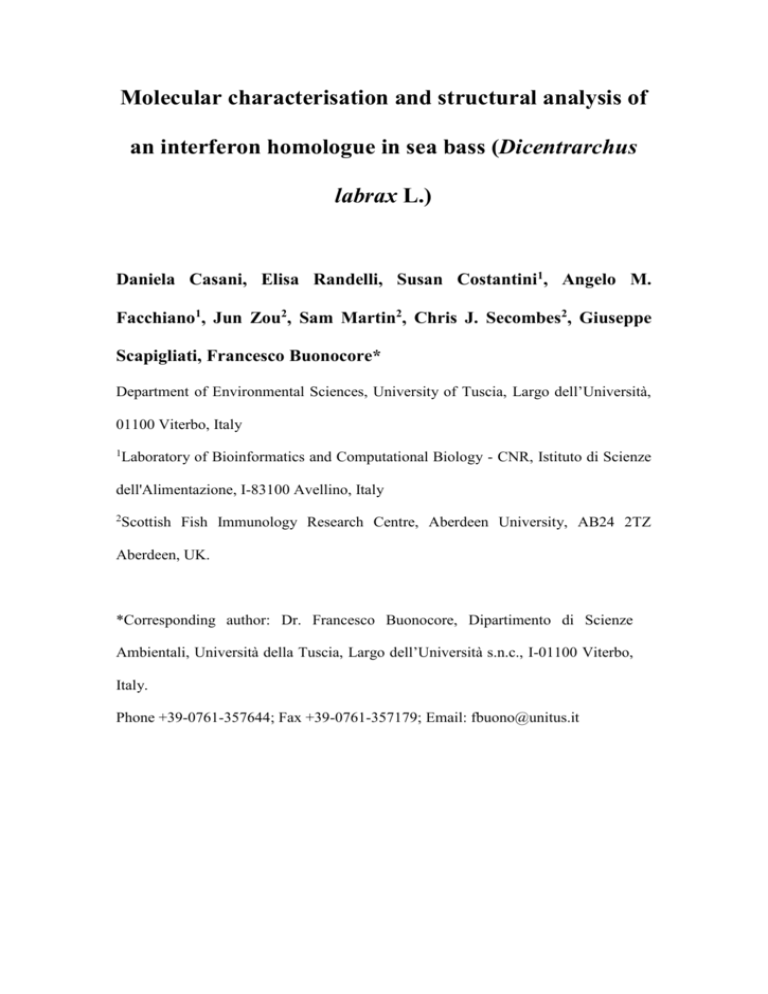
Molecular characterisation and structural analysis of an interferon homologue in sea bass (Dicentrarchus labrax L.) Daniela Casani, Elisa Randelli, Susan Costantini1, Angelo M. Facchiano1, Jun Zou2, Sam Martin2, Chris J. Secombes2, Giuseppe Scapigliati, Francesco Buonocore* Department of Environmental Sciences, University of Tuscia, Largo dell’Università, 01100 Viterbo, Italy 1 Laboratory of Bioinformatics and Computational Biology - CNR, Istituto di Scienze dell'Alimentazione, I-83100 Avellino, Italy 2 Scottish Fish Immunology Research Centre, Aberdeen University, AB24 2TZ Aberdeen, UK. *Corresponding author: Dr. Francesco Buonocore, Dipartimento di Scienze Ambientali, Università della Tuscia, Largo dell’Università s.n.c., I-01100 Viterbo, Italy. Phone +39-0761-357644; Fax +39-0761-357179; Email: fbuono@unitus.it ABSTRACT The interferons (IFNs) are a large family of soluble cytokines involved in the immune response against viral pathogens. Three families of IFNs have been identified in mammals (type I, type II and type III) and, recently, homologues of type I and type II genes have been found in various teleost fish species. In this paper we report the cloning of a cDNA encoding an type I IFN molecule from sea bass (Dicentrarchus labrax L.), its expression analysis and gene structure and, finally, its 3D structure obtained by template-based modelling. The sea bass IFN cDNA consists of 1047 bp that translates in one reading frame to give the entire molecule containing 185 amino acids. The analysis of the sequence revealed the presence of a putative 22 amino acid signal peptide, two cysteine residues and three potential N-glycosylation sites. The sea bass IFN gene contains four introns as with other type I IFN teleost genes, except medaka that contains three introns. Real time PCR was performed after poly I:C stimulation of DLEC cell line to investigate the expression of sea bass IFN and Mx and an induction was observed for both genes. The predicted 3D structure of sea bass IFN is characterized by an “all-alpha” domain that shows an “up-down bundle” architecture made of six helices (ABB’CDE). The two cysteine residues present in the sequence (i.e. Cys23 and Cys126) are in a position and at a distance that suggest the possible formation of a disulfide bridge that may stabilize the structure. Our results will give the opportunity to investigate more in detail antiviral immune responses in sea bass and add to studies on the evolution of the IFN system in teleosts and Vertebrates more generally. Key words: IFN; Dicentrarchus labrax; sea bass, Mx, gene structure; real time PCR; 3D structure.
